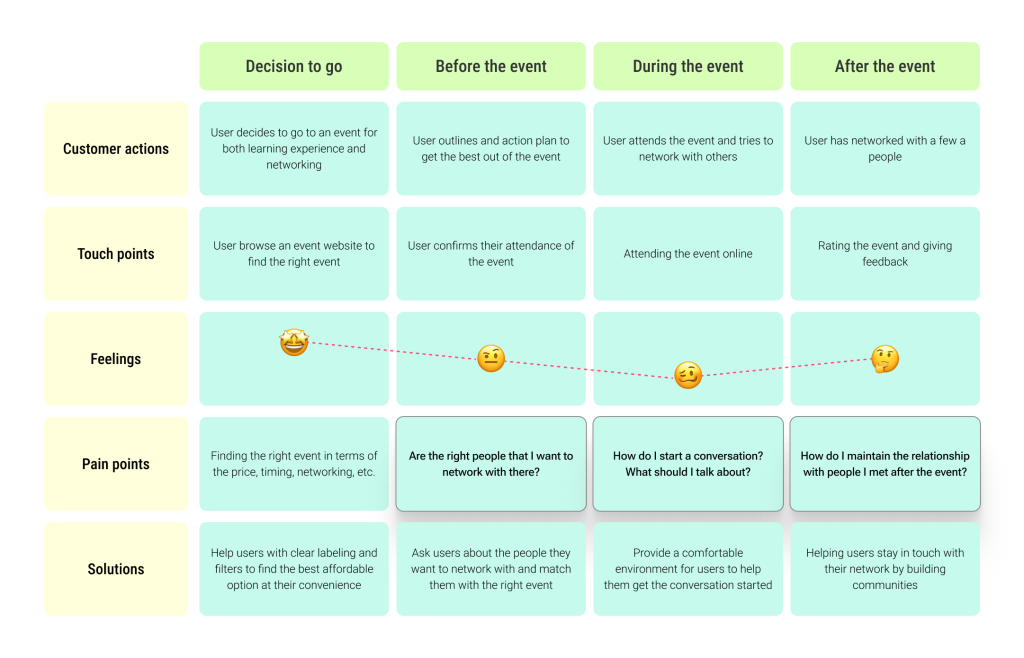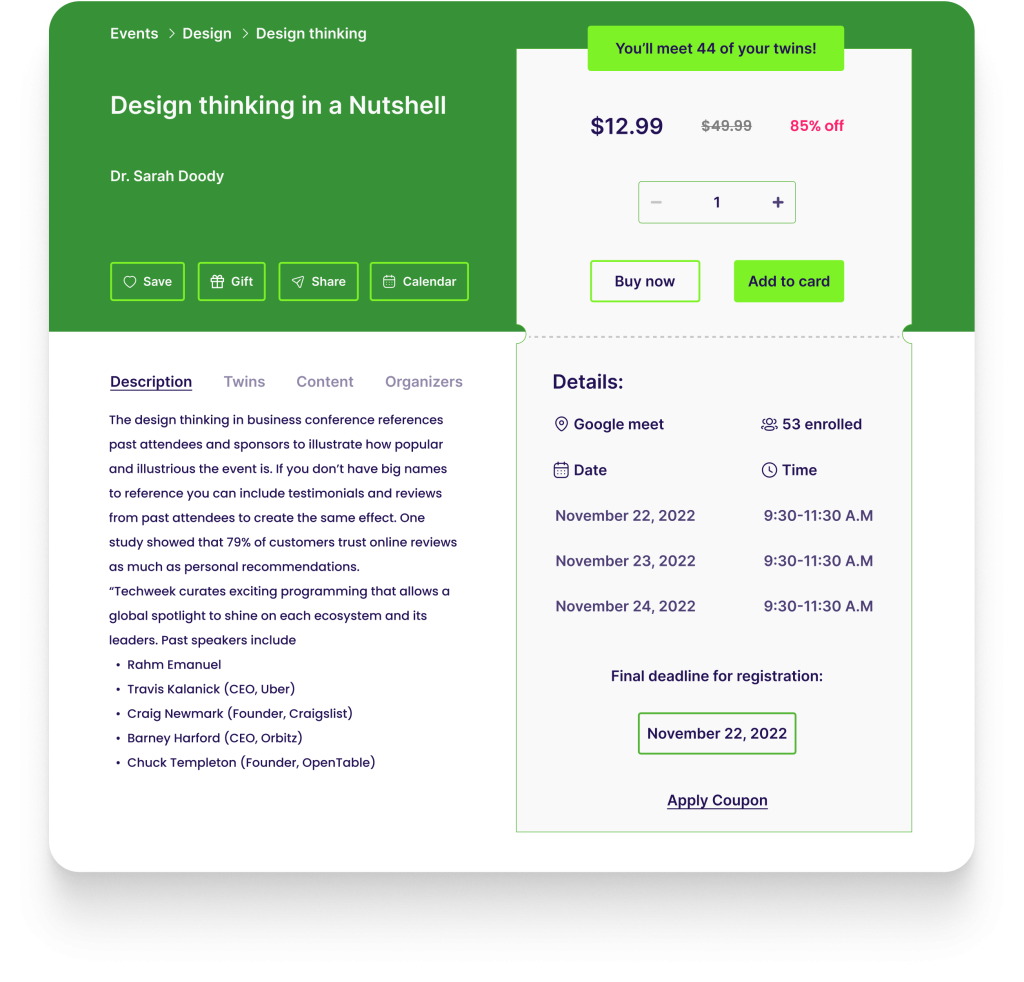TwinUp
Event management and networking website
UX design ▪ Case study ▪ Personal Project
Challenge
How might we help people find the right people to network with in online events?
Role
UX designer
Deliverables
- User research report
- Task flows
- Sketches
- UI
- Prototype
Tools
- Figma
- Google meet
- Microsoft Office
Timeline
December 2022















